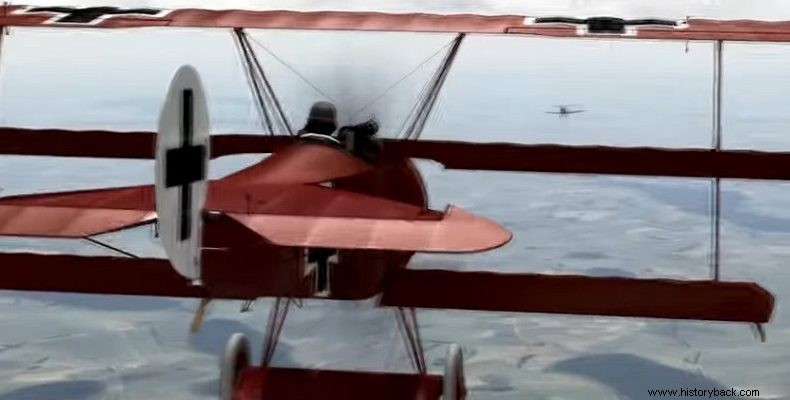
The Fokker DR I was designed by Reinhold Platz, who inspired the new fighter from the British Sopwith triplane. Platts designed the aircraft with an emphasis on maneuverability. For this he designed an aircraft with wings of very small wing area and thin chord.
The aircraft was fitted with the 110 hp Oberursel Ur II engine, which was a copy of the French Le Rhone engine. The total combat weight of the aircraft was only 586 kg. The aircraft developed a maximum speed of 185 km per hour at a low altitude and 166 km per hour at a higher altitude.
It was consequently behind in speed, the British and French chasers of its time. But it could fly at a height of up to 6,100 m and had a significantly better rate of climb than allied aircraft. It was armed with two 7.92mm machine guns.
The aircraft was tested and evaluated, in August 1917, by the famous "Red Baron", von Richthofen, who was impressed by its maneuverability and rate of climb. So he joined service. A total of 320 aircraft of the type were built and it remained in service until June 1918.
Great aces, such as Richthofen (80 shootdowns), Werner Foss (48 shootdowns), flew and worked with this aircraft.
Foss, in his last aerial battle, fought alone, for a long time, with an entire squadron of British fighters. His triplane maneuvered with such ease that the British pilots could not hit him. In the end it took 8 British fighters to shoot down Foss.
A major problem that faced the aircraft from the beginning to the end of its action was the structural weakness of its upper wing. However, the aircraft became, together with the Albatros, synonymous with the “Flying Circus” of von Richthofen.
